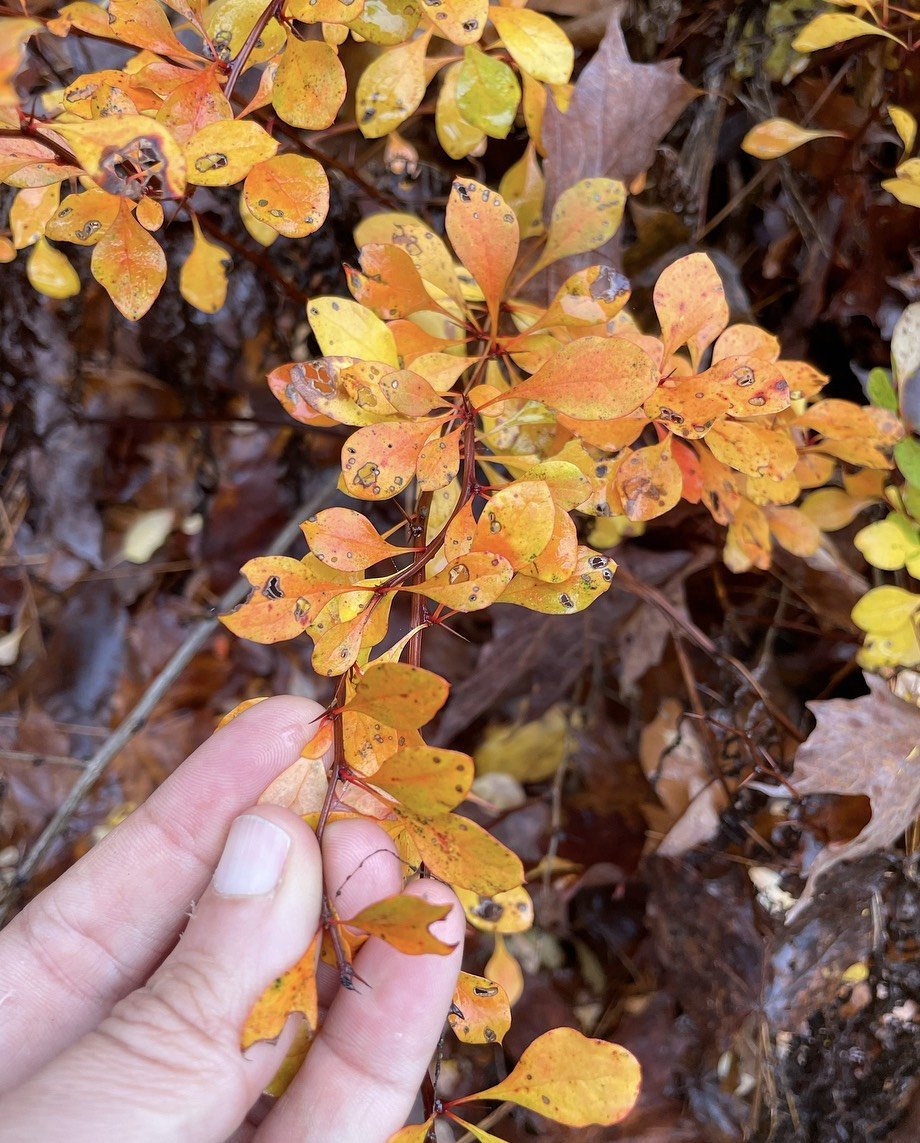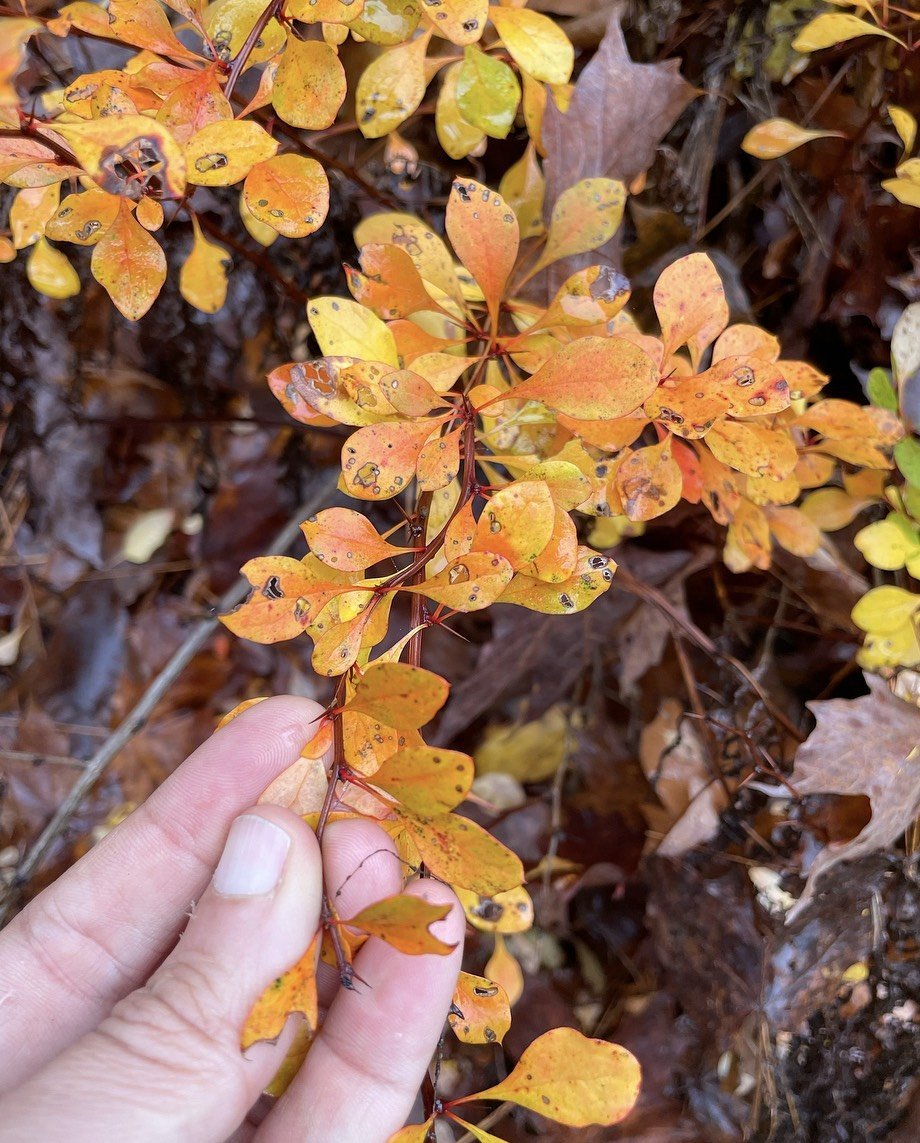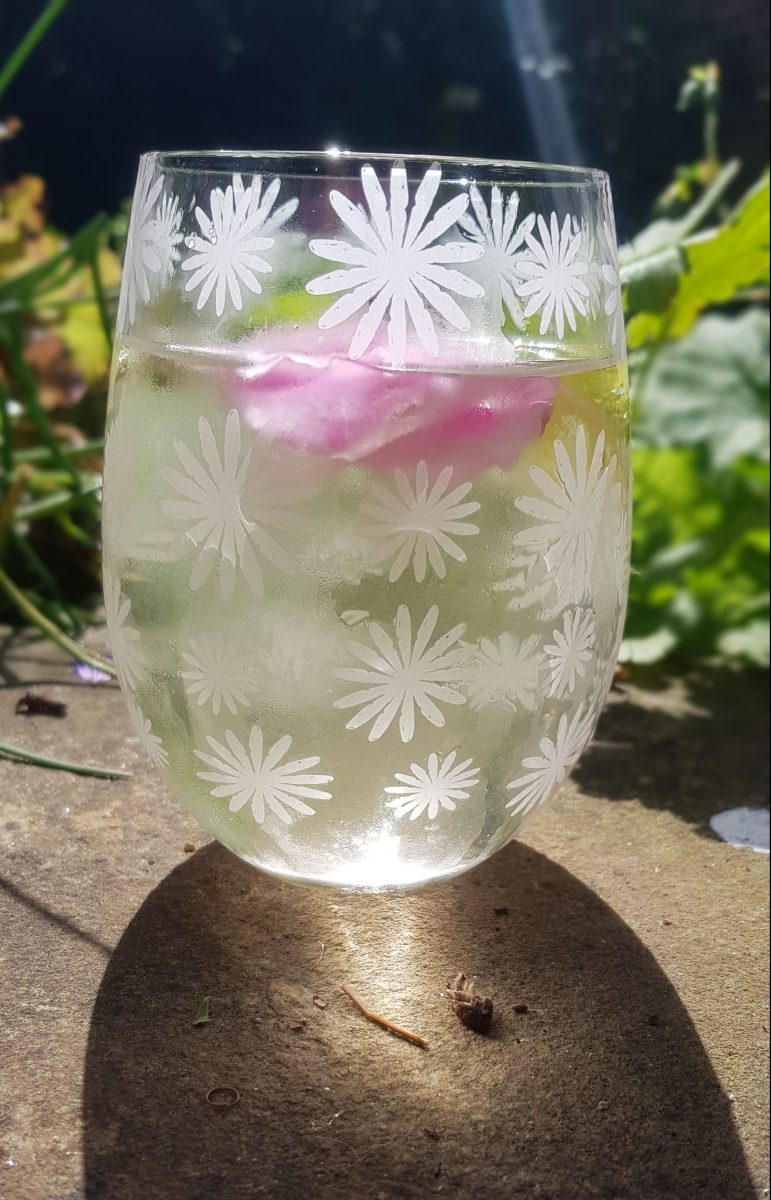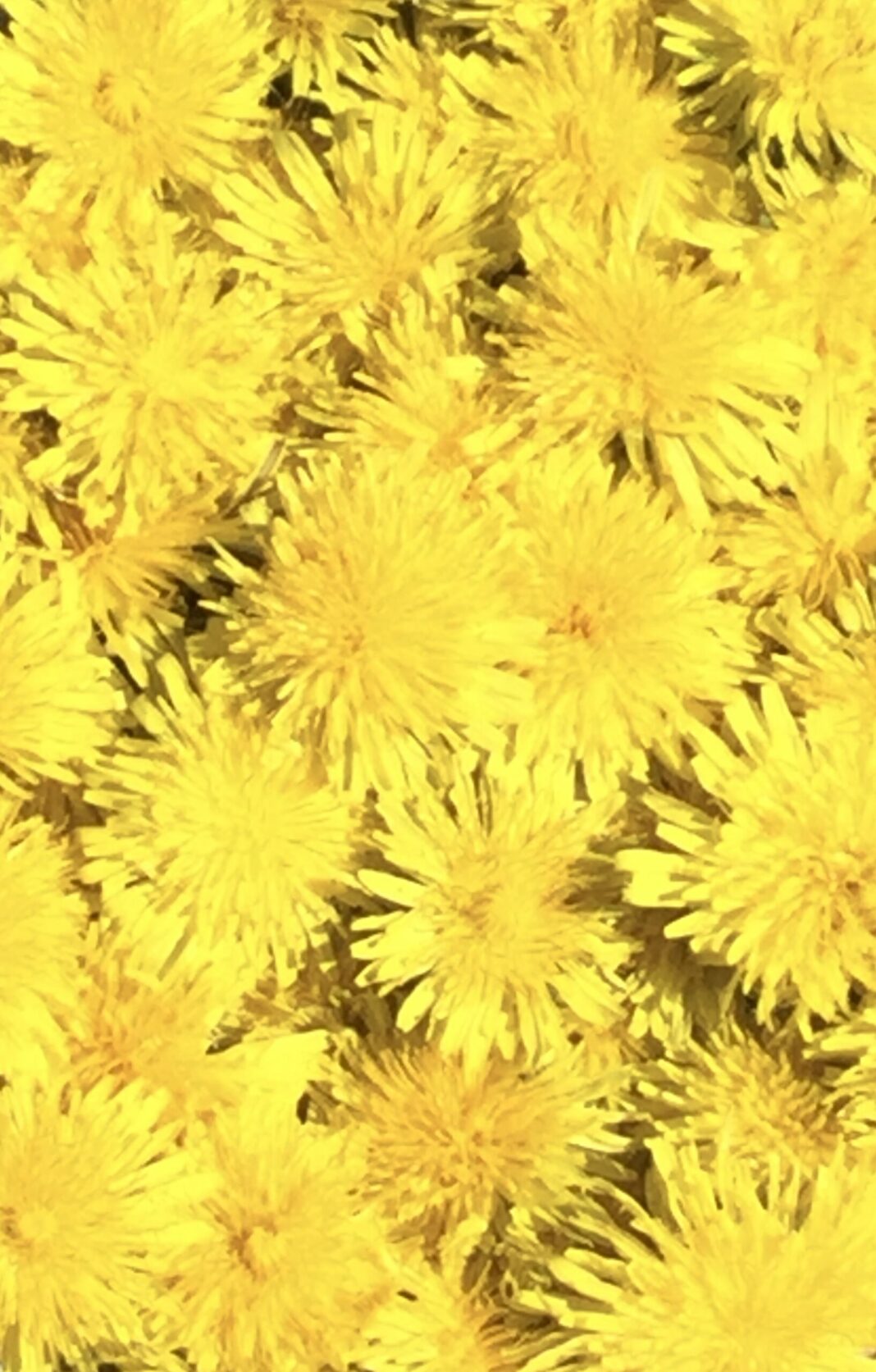
Barberry Materia MedicaLatin name: Common Barberry (Berberis vulgaris), Japanese Barberry (Berberis thunbergii), Berberis sppFamily: Berberidaceae Other Names: Jaundice Berry, Pepperidge Bush, BerberryPart Used: Stem Bark, Root Bark, Root, Stem, Berry. The active constituent, berberine, is the most concentrated in the root bark first and then the stem bark, however the stem is much easier to harvest. Traditionally the stem bark and root bark were the parts used but nowadays herbal companies sell the root. Some accounts say the whole root was sometimes employed in Europe. The presence of berberine is indicated by the yellow color in the inner stem bark, root bark, and root and the more yellow a tincture is, the more berberine it contains.Habitat: Roadsides, woods and woodland edges, fields, farms, bike paths, yards, parks, abandoned areas and lotsCultivation: No need to cultivate this one as it is extremely abundant. Japanese Barberry is widely planted as a landscape plant and is tolerant of a wide variety of conditions. Needs full sun to part shade. Because of Wheat Rust Fungus (see more in “herbal ecology” section below), it’s illegal to cultivate B. vulgaris in Canada, Connecticut, Massachusetts, Michigan, and New Hampshire.Description: Common and Japanese Barberry look very similar and the main defining difference is the number of spines- Common Barberry has 3 spines and Japanese Barberry has one. Both are medium-sized, deciduous shrub with small oval leaves .75-2 inches in length that arise in clusters of 2-5 leaves. The clusters are subtended by slender thorns that look like needles, rather than being curved like Rose. The inner cambium bark of the stem and root bark is a distinctive yellow, as are the roots. Bears flowers in beautifully cascading panicles in late spring, which give rise to clusters of small red, oblong-shaped, berries in late summer and fall. B.vulgaris- The flowers are yellow and grow on 3-6 cm long panicles, and it has 3 spines that grow alongside the leaf clusters. B. thunbergii- Has pale yellow flowers that grow on drooping umbels and has just one spine arising from the main stem alongside the leaf clusters.Herbal Ecology: There are many different species of Berberis in the world, including some native to the U.S., but B. vulgaris and B. thunbergii are the most widespread, particularly in the eastern U.S, the Midwest, and parts of the Rockies and Pacific Northwest. Common Barberry (B.vulgaris) was originally native to western Asia and is now found throughout all of Europe, the British Isles, Northern Africa & SWANA region, temperate Asia, southern Canada, and most of the U.S. It was brought here by colonists in the mid 1600’s for food, medicine and to create hedgerows, and quickly escaped cultivation. By the 1800’s there was a widespread effort to eradicate it since it had long been linked to wheat crop failures, and it was finally proven to be a host for wheat rust fungus (Puccinia graminis). Japanese Barberry (B. thunbergia) was first introduced to America in 1875 and was promoted as a replacement for Common Barberry, since it doesn’t carry the rust fungus. Both species provide year-round medicine in both their bark, root, and fruit and provide winter forage for wildlife through the winter. According to a study, it seems as though Japanese Barberry may be associated with a higher number of ticks in an area. Both species are on the Invasive Plant Lists in many states. Care must be taken to be sure you’re not accidentally harvesting the endangered, native Barberry (B. candensis), which ranges from the Appalachian Mtns in Pennsylvania, south to Alabama, and west to Missouri.
Top 5 This Week
Related Posts
Barberry Medicine — Milk & Honey Herbs


